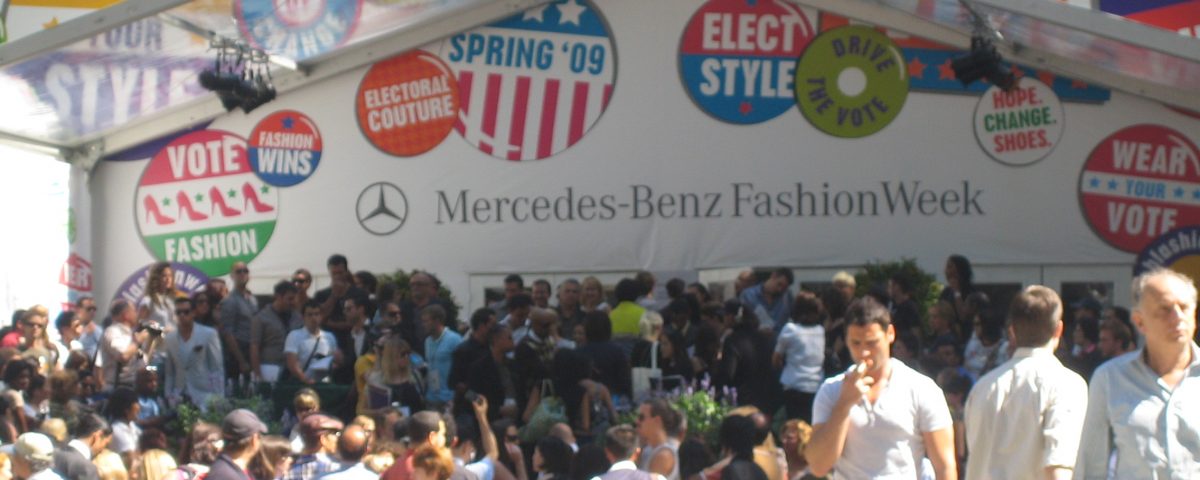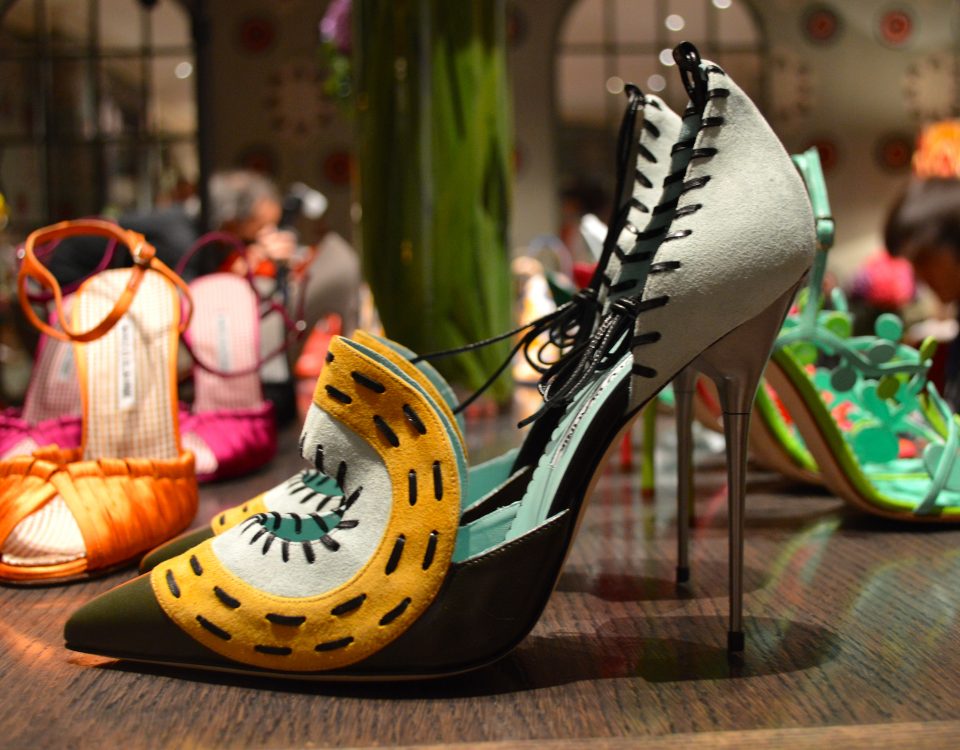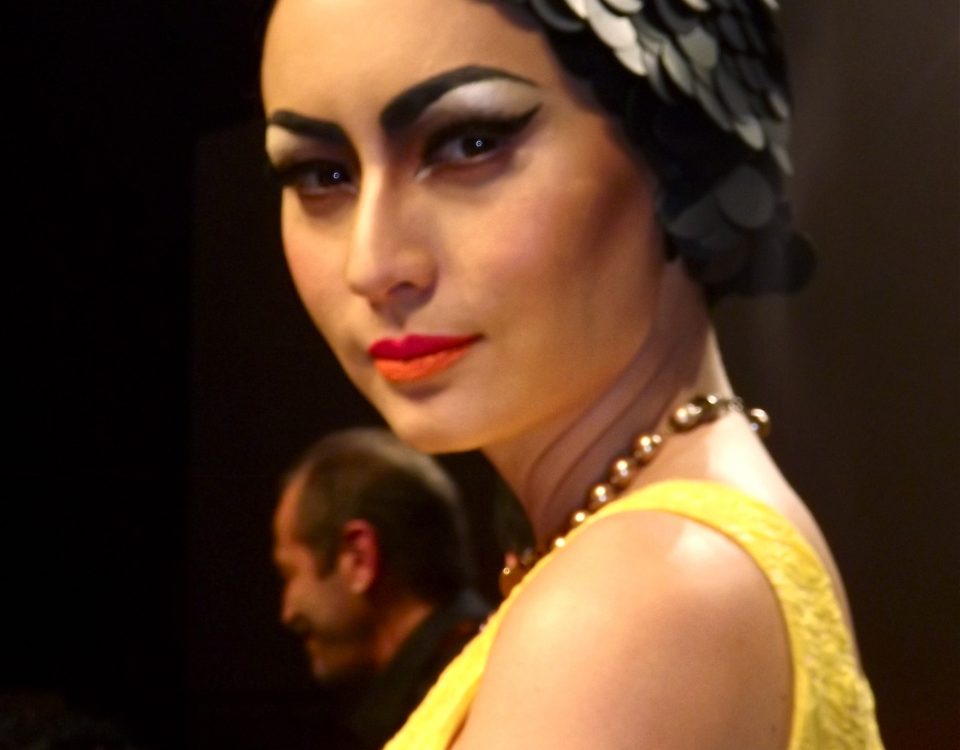On New York Fashion Week

The Washington Times: Labor Day Picks (Or, Where Did the Summer Go?)
August 30, 2013The Washington Times: Go Against the Trends at Adams Morgan Day
September 6, 2013Oscar de la Renta made headlines this week when he told WWD that he would only invite 350 select industry professionals to his runway show at Mercedes-Benz Fashion Week in New York. “They shouldn’t have to go through 30,000 people and 10,000 who are trying to take pictures of all those people who are totally unrelated to the clothes,” he said.
I typically hate trends, but if downsizing Fashion Week is one, I’ll support it. It’s not like I’d be on the Oscar de la Renta list anyway—my only connection to the brand is following it on Instagram. I also haven’t covered New York Fashion Week since 2009—and the manic crowds there are just one reason why.
I first attended New York Fashion Week in September 2008, mere days after I returned from the Republican National Convention in Minneapolis-St. Paul. I was a deputy online editor at The Weekly Standard, then still owned by NewsCorp and the deep-pocketed “Uncle Rupert” who paid for Acela fares between Washington and New York. Knowing my love of fashion, a supportive editor suggested I see what the hype was about in Bryant Park for the magazine’s arts section. With press credentials around my neck–ugh! how gauche!–I covered Hervé Léger and interviewed Erin Fetherston. As a “serious Washington writer,” I promised myself I wouldn’t start drooling over pastel leather like those fashion people, but I did pack every piece of Theory I owned.
One chic (and very friendly) stylist told me that year, “Fashion Week is as important to those who work in fashion as getting dressed in the morning is to the rest of the population. This is where we tap into all of the very exclusive information that’s only available and accessible to those who work in fashion.”
This is no longer the case. Once an exclusive industry event, New York Fashion Week is now a spectacle deserving of Sacha Baron Cohen’s mockery. Certainly, the exclusivity ended when Style.com and WWD began posting the runway photos online nearly in real time. Now, it seems like anyone with the slightest interest in shopping finagles some invitations. I’m not saying the event should be elitist for the sake of being elitist; it should get back to business.
New York Fashion Week still has an important role for retail. Generally, the clothes shown in New York are much more consumer friendly—or “wearable,” as the fashionistas like to say—than those shown in other fashion capitals. You’ll see classic designs by Ralph and Diane and Carolina, as well as a new guard of trendsetters like Jason Wu and Prabal Gurung and, surprisingly, The Row’s Mary Kate and Ashley Olsen. There’s something for everyone, especially for Barney’s. In short, New York Fashion Week is a trade show, though I’d argue that these days, more tangible fashion business takes place during MAGIC Market Week in Las Vegas than the Fashion Week tents and parties.
If you’re a buyer or magazine editor or stylist to the stars, there absolutely is value in seeing the clothes in person—the fine details that make a coat or dress worth $1000 or more. As Mr. de la Renta lamented, however, it’s impossible to see them in a tent with a few thousand people, many of who know nothing about fashion history or the mechanics of the industry. Sadly, the New York tents have become a community therapy session for hundreds of “style bloggers” with self-esteem issues and credit card debt, who beg to be photographed at an event that ironically, because of them, is anything but elite.
It’s not just the bloggers contributing to the spectacle, but also the press corps, as the dearth of true fashion criticism demonstrates. Aside from a few exceptions like the New York Times’ Cathy Horyn, fashion criticism has all but disappeared in favor of fawning praise so publications don’t lose their coveted seats next season (and advertising dollars from the offended brands). Though editors and bloggers may love you, few designers will be the next Jason Wu.
I applaud Mr. de la Renta and others who have chosen to downsize their shows, returning to a time when New York Fashion Week was a civilized and meaningful industry event. Maybe I’ll return someday. (If, however, I won’t be punished for real criticism when warranted.) The only other option is to completely democratize the whole process, by selling tickets and live-streaming every show for the masses in the season in which the clothes are meant to be worn.
While I have many pieces by Phillip Lim and Milly and other top-notch New York designers on my fall wish list, I’ll be sitting out the event in favor of clicking on Style.com in my sweatpants. The spectacle is simply too much.
Or, maybe I’m just jealous. After all, no street style photographers will give me a second look in the same old black (Theory!) blazer and skinny jeans I wear every day at London Fashion Week.





